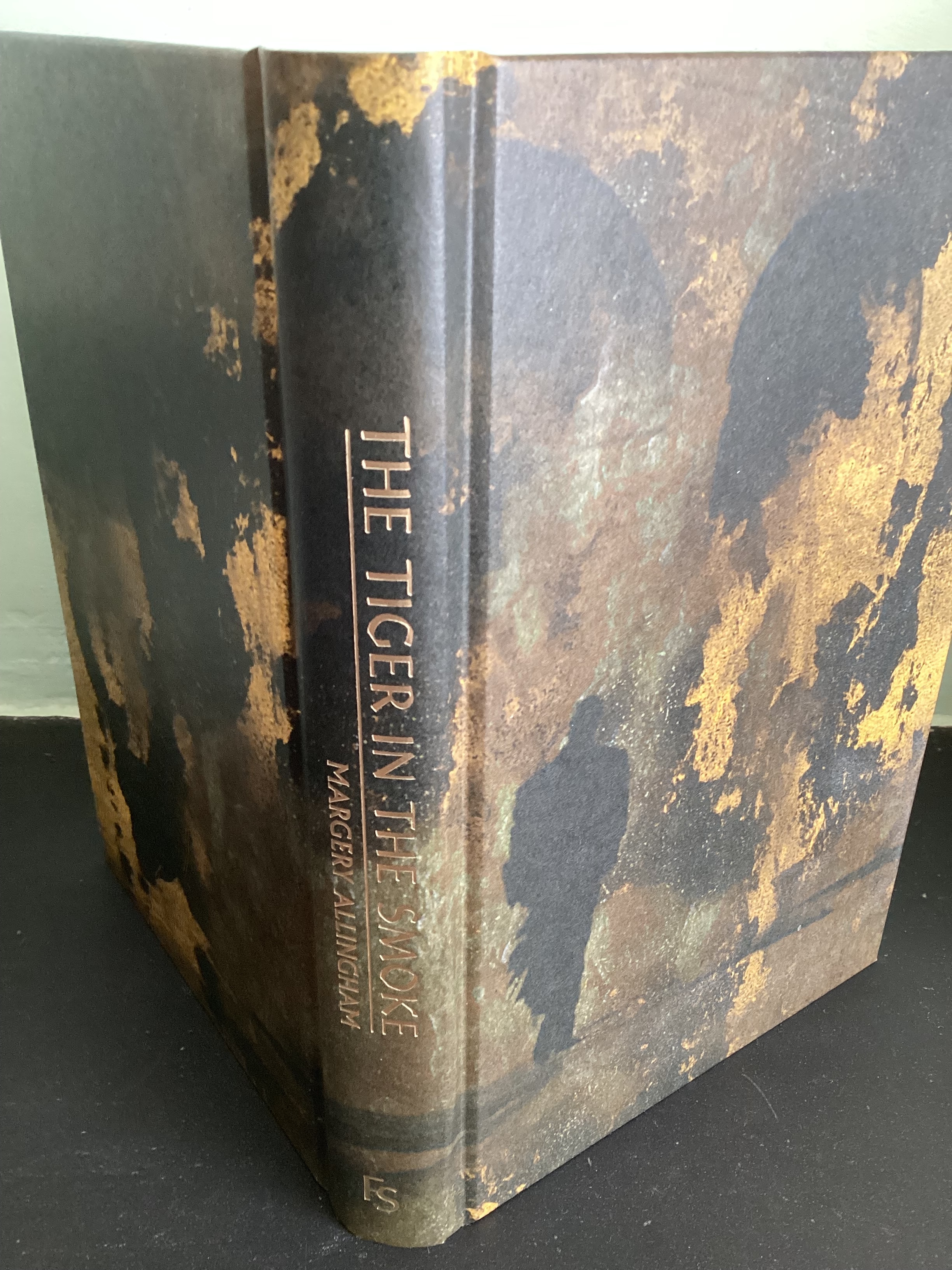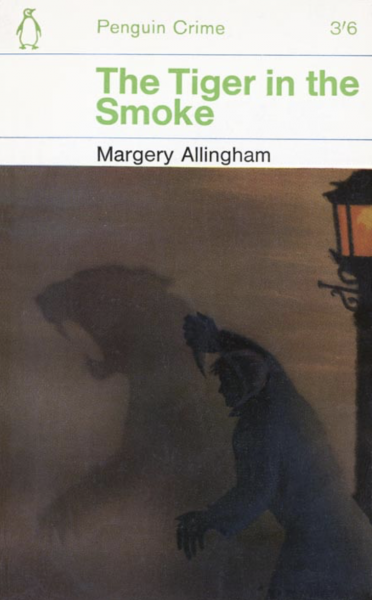Inspiring Older Readers
 posted on 17 Jul 2025
posted on 17 Jul 2025
The Tiger in the Smoke by Margery Allingham
British novelists must have cursed their luck when the Government passed the 1956 Clean Air Act because it was largely responsible for robbing them of a key deus ex machina for their mystery novels – the pea-souper fog. So often it helped set or resolve plot lines as protagonists blundered around, their sight inhibited by the murk of a thick fog but it could also usefully be employed as a metaphorical manifestation of a state of mind, a set of emotions or a comment on a character’s mental health. A useful thing, the fog.
Fortunately for Margaret Allingham, the book that has probably become her most famous and lasting legacy to the mystery thriller genre, The Tiger in the Smoke, was released in 1952 and so she was able to make the famous London pea-souper the backdrop to her convoluted plot. Calling it a ‘backdrop’ rather does it a disservice because I think it can be argued that the fog is very much one of the central ‘characters’ and, to my mind, it’s probably the star of the show. This is very much a book that’s about atmosphere, about the difficult to see, the hard to find, disguised motives and the fearful claustrophobia of being out and about when you can barely see your hand in front of your face.
As always with psychological thrillers (and crime detective stories) it’s difficult to know how much plot to give away without inadvertently spoiling the twists and turns – a conundrum that’s deepened by the fact that, as in this case, the plot is very complex and once you start pulling on a thread, you find yourself unravelling the whole lot. So, suffice it to say that at the heart of this plot is the rumour of an incalculable treasure hidden in a French town during World War Two, the whereabouts of which is in a letter believed to be given to the widow of the man who did the hiding. What you also need to know is that the person who wants to get their hands on that letter is an almost legendary and dangerous criminal known as Havoc, whose reputation sends shivers down the backs of the sternest policeman and most hardened criminals.
Margery Allingham is also famous for the creation of her own ‘personality’ detective, Albert Campion, who makes an appearance here too – but is very much on the fringes of the story and the action, there primarily because he’s the cousin of the aforementioned widow.
The power of the story very much needs you to find the character of the villainous and devilish Havoc genuinely frightening and, perhaps more importantly, believably frightening. This is quite a task for the author because Havoc needs to avoid becoming a sort of melodramatic Victorian stock character – a sort of sub-Ripper – and, instead, have a psychological reality and fully stacked set of motives and behaviours and I was forced to ask myself whether, in the context of a thriller novel of this kind, Allingham had the time (or the skill) to build such a character profile.
But these quibbles are exactly that, just quibbles because I still think this is an engaging and very readable thriller that will keep you turning the page and uncertain about how this will be resolved – treasure or no treasure.
Paperback editions are easy enough to find – I especially fond of the old Penguin greenback edition (pictured below) with what I think is one of the very best pieces of jacket art. I read the Folio Society edition which is pictured here and is a good hardback alternative to the almost impossible to find first edition.
Terry Potter
July 2025
